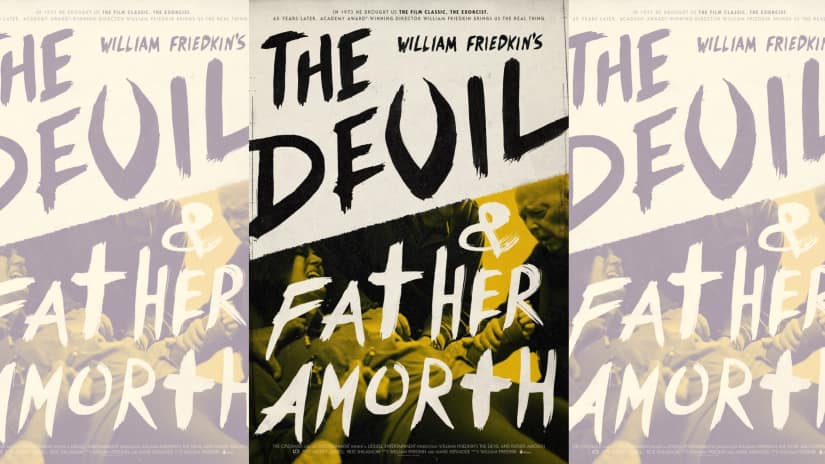William Friedkin lit up the ’70s with a series of critical and box office successes that ensconced him comfortably within the group of directors loosely referred to as New Hollywood. The French Connection, Cruising, Sorcerer and, perhaps most notably, The Exorcist, spurred in part by the intense controversy it generated among those of the Catholic faith, turned him into one of the hottest directors of his time. The Exorcist plunged headlong into questions of faith, taking violent jabs at the sanctimony surrounding religion and emerged with unprecedented box office success. To this day, it remains as hotly debated and influential as ever. Only recently did a horror film (It) manage to break The Exorcist’s long-standing box office record. When pitted against the entirety of a glittering film career, The Devil and Father Amorth, Friedkin’s new documentary out on Netflix, seems nothing more than an afterthought to the questions raked by The Exorcist. It is an occasionally interesting film that strives to revisit and channelise the ideas and conflicts that underscored the 1973 film through a non-fictional medium. Father Amorth, an octogenarian Vatican exorcist, amongst the most revered figures of faith in our time, lies at the centre of the film. The Exorcist is remembered for the exorcism scene, filmed with great elan by Friedkin, that brings the film to a close. This time around, Friedkin is granted the opportunity to film an actual exorcism conducted by Amorth. Sans fancy cameras and assistants, the director finds himself in a small room filled by the relatives of a woman who is believed to be possessed. The entire film revolves around this single, unedited exorcism sequence, the woman’s ninth, conducted by the same exorcist. [caption id=“attachment_4892041” align=“alignnone” width=“825”]  Poster for The Devil and Father Amorth. Netflix[/caption] Friedkin starts off the film from beneath the staircase made ridiculously famous by the ending of his seminal 1973 film. We become immediately aware of the director’s keenness to extend his film’s legacy to the present day. The rest of the film, barring the exorcism sequence, lacks the imagination or verve of the original movie. It is a by-the-numbers documentary that pulls in a couple of scientists and men of faith to examine the exorcism footage. The exorcism itself is shorn of the histrionics, special effects and pyrotechnics that were essential ingredients of the original film’s legend. To his credit, Friedkin remains completely objective throughout the sequence. Only later does he delve into the questions an experience as singular as that might rear up in the mind of a creative artist. There are hints of the brilliance that were de rigueur for his greatest work. The story of the woman and her boyfriend’s meeting with Friedkin after the exorcism is chilling to the bone. The fact that it remained unfilmed renders it even more horrifying. Then there is the reverence and humility displayed by a bishop interviewed by Friedkin. His frank appraisal of his spiritual attainment and reverence for Amorth makes the entire exchange fascinating. Apart from these moments that are few and far between, TDAFA never really sucks you into its narrative. The talking heads spout stuff you’d expect them to, a predictable mixture of ignorance and astonishment. The shadow of The Exorcist looms far too large on a film that lacks the craft and imagination of the original. Friedkin appears to be fatally mesmerised by his subject, in effect failing to bring his signature directorial finesse to the table. The Devil and Father Amorth never comes close to being a significant addition to a director’s oeuvre. Admirers of the original film might find material that whets their appetite sufficiently to canter through this film. Barring the exorcism sequence, it never truly gets the juices flowing. The intellectual engagement with the subject remains fragmentary at best. Often, it even seems lazily put together. And while it doesn’t tarnish the legacy of the original, it will be stretch to say that it comes anywhere near to furthering it.
Admirers of The Exorcist might find material that whets their appetite sufficiently to canter through The Devil and Father Amorth
Advertisement
End of Article


)
)
)
)
)
)
)
)
)



